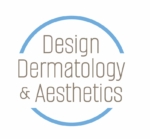What is it?
There are many types of cysts that show up on our skin. A cyst is a sac-like pocket of membranous tissue that contains fluid, air, or other substances. They can grow almost anywhere in your body or under your skin.
There are many types of cysts. Most cysts are benign, or noncancerous.
Cysts can be small round bumps, usually white or yellow. Can form from blocked oil glands, and commonly appear on the face, back, neck or trunk. If a cyst becomes infected it will feel tender and become red. It can produce a thick yellow discharge when squeezed. It is recommended that you schedule an appointment with your dermatologist if you think you have cysts. They will determine a treatment based on the type of cyst that you have.
What causes it?
Cysts are common and can occur anywhere on the body. They are often a result of infection, clogged sebaceous glands, or piercings.
Some other common causes of cysts include:
- tumors
- genetic conditions
- a defect in the cells
- chronic inflammatory conditions
- blockages of ducts in the body that cause fluids to build up
- a parasite
- an injury that breaks a vessel
In most cases, it is unusual for cysts to cause pain unless they rupture, become infected, or are inflamed.
Common treatments?
The treatment options for a cyst will depend on a range of factors, including the type of cyst, where it is, its size, and the degree of discomfort it is causing. For very large cysts that are causing symptoms, a doctor may recommend surgical removal.
Sometimes, they might drain or aspirate the cyst by inserting a needle or catheter into the cavity. If the cyst is not easily accessible, they may use radiologic imaging to accurately guide the needle or catheter.
Sometimes, a health professional may examine the removed liquid under a microscope to determine whether or not any cancerous cells are present. If they suspect that the cyst is cancerous, they may suggest surgical removal, order a biopsy of the cyst wall, or both.
Many cysts develop as a result of a chronic or underlying medical condition, as may be the case with fibrocystic breast disease or polycystic ovary syndrome. In such cases, the focus of the treatment will be on the medical condition itself, not the cyst.
Our approach & expertise
Cysts are common and affect each individual differently, therefore it is important that we see patients and assess the proper treatment method. Because cysts can also vary in severity, we are careful to treat each one carefully.
We understand how a cyst can be a physical nuisance and even affect your self-esteem. As your experienced community skin experts, we have the knowledge to help you manage this condition. Healthy skin is our passion. Contact us if you have a cyst that you want to eliminate so you can have clear, smooth skin once again.

